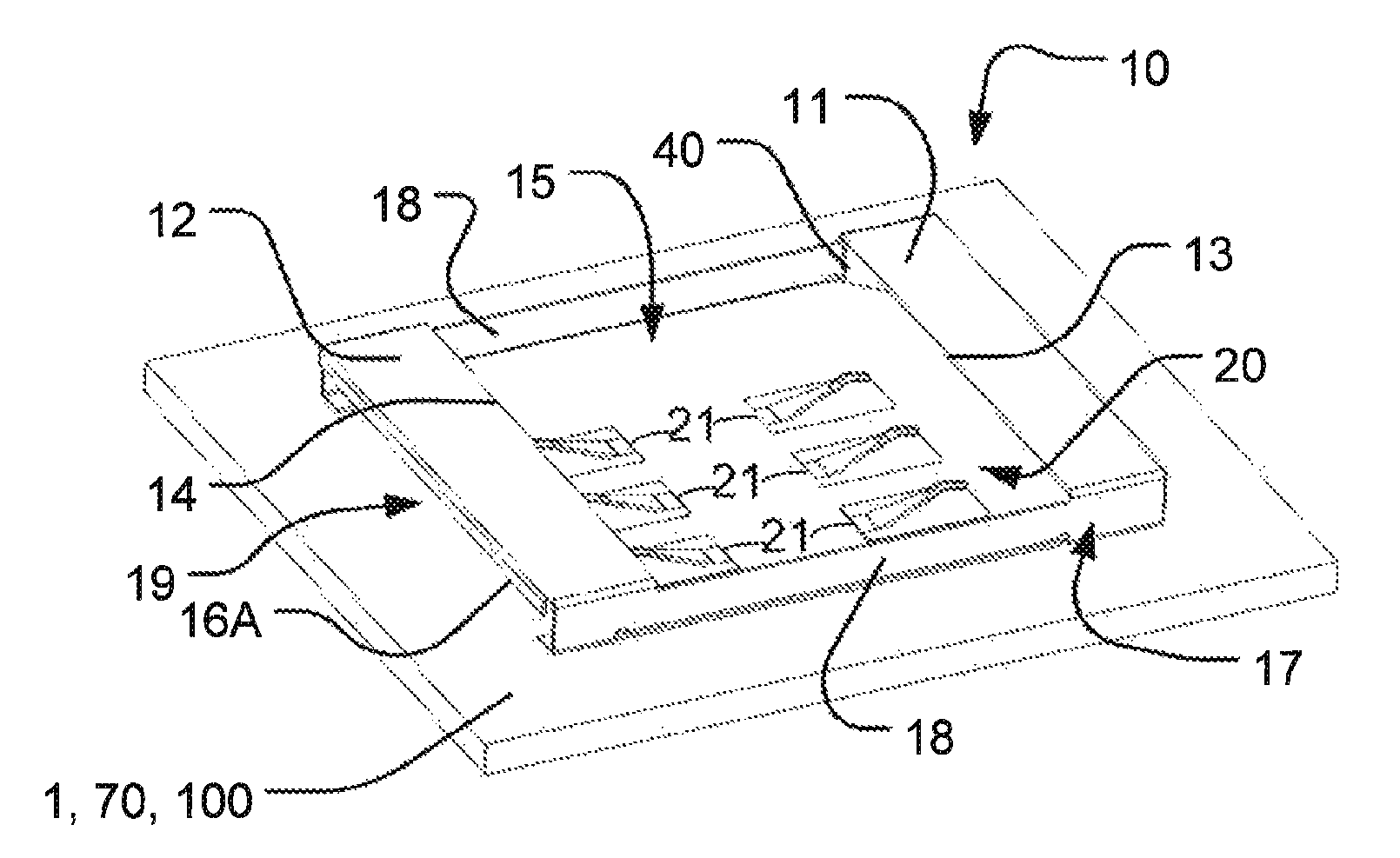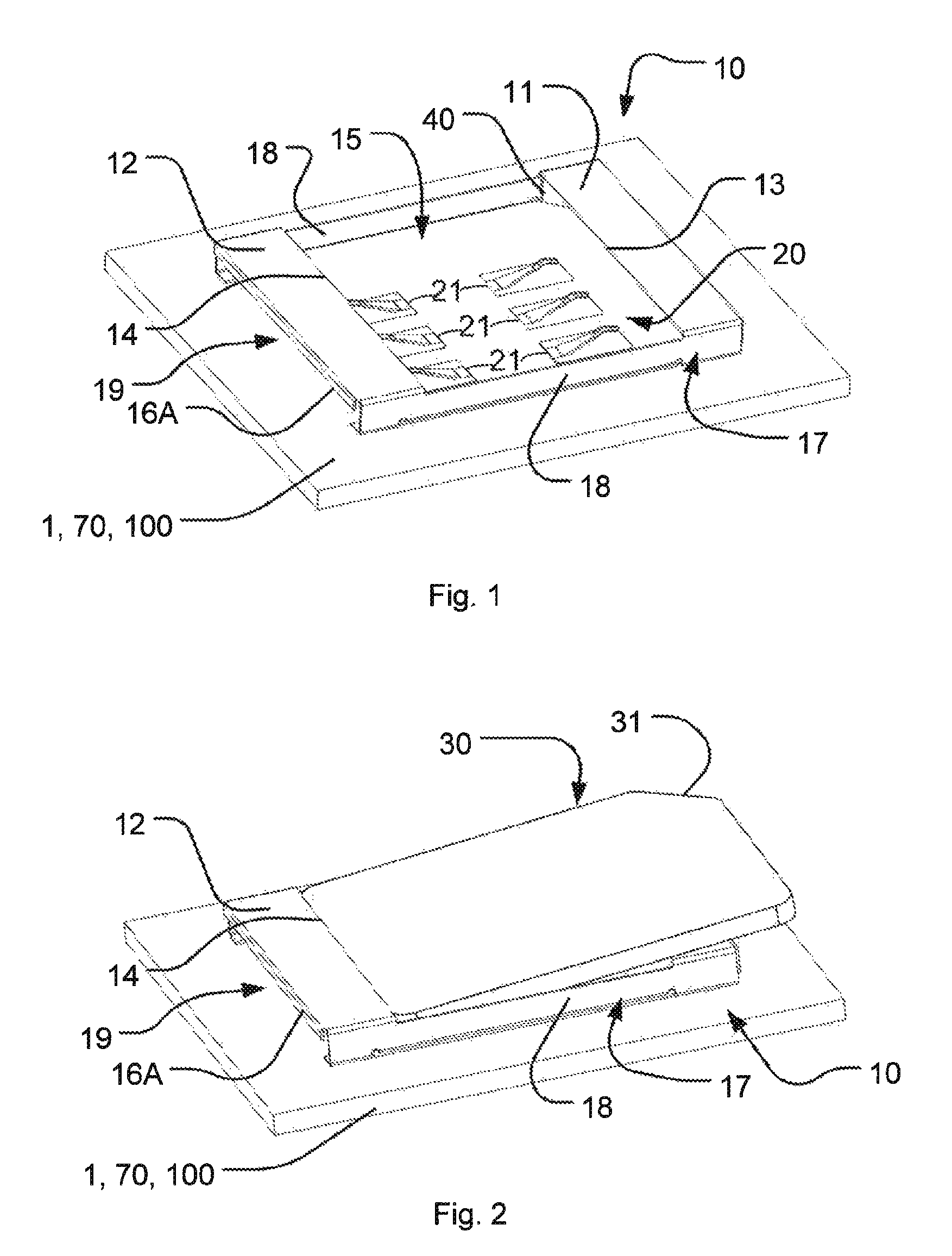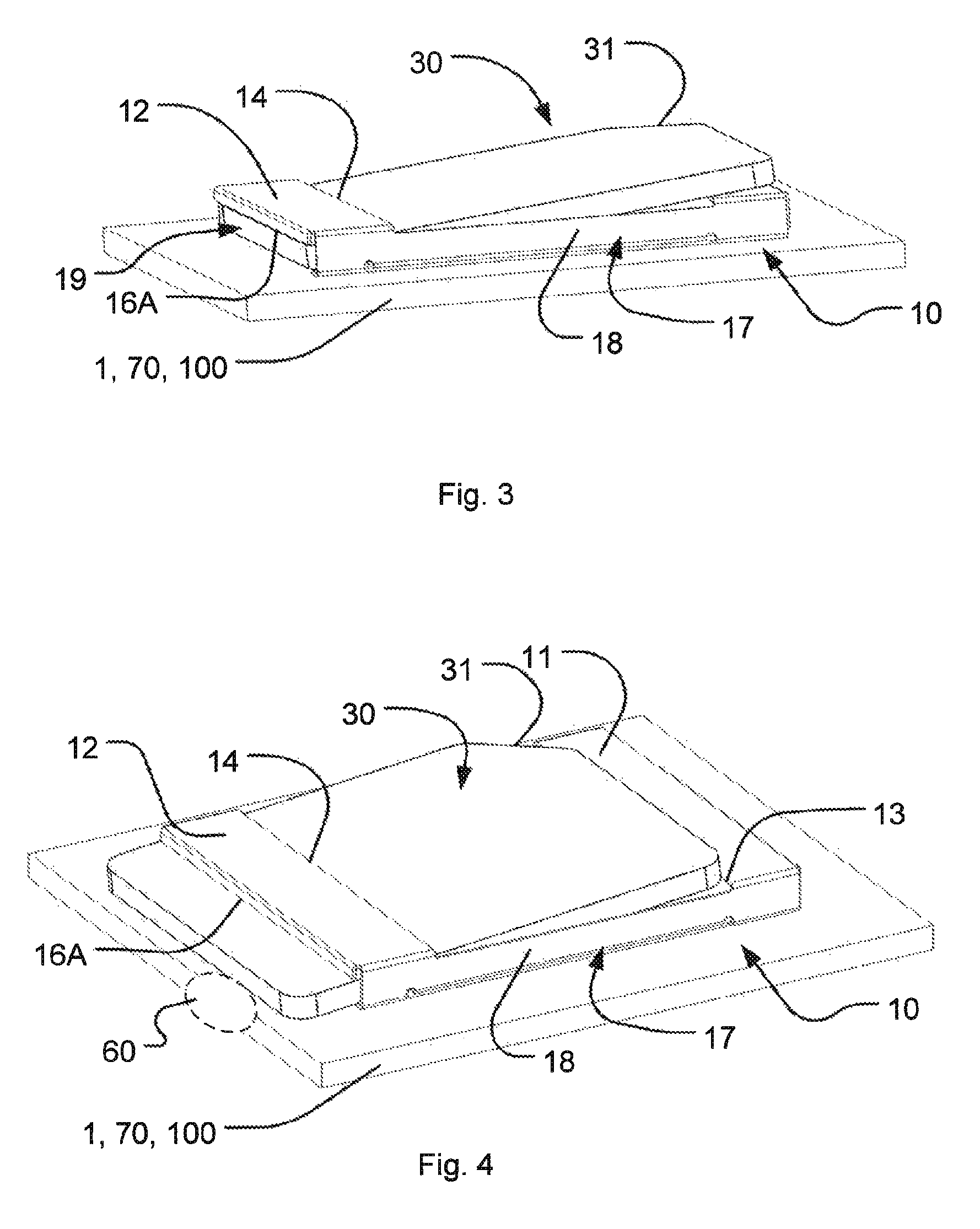Card holding device
a card and holding device technology, applied in the field of card connecting and holding devices, can solve the problems of inability to meet the needs of low-profile card readers, and inability to operate, so as to facilitate the introduction of smart cards, facilitate the removal of smart cards, and reduce the total cost of manufacturing the electronic device using such a card holding device
- Summary
- Abstract
- Description
- Claims
- Application Information
AI Technical Summary
Benefits of technology
Problems solved by technology
Method used
Image
Examples
Embodiment Construction
[0039]Aspects of the present invention will be described more fully hereinafter with reference to the accompanying drawings. FIGS. 1-15 show different views of a part of a portable electronic device 1 comprising a card holding device 10 according to different aspects of the invention. FIG. 16 shows a mobile electronic device 1, 100 where an exemplifying position of the card holding device 10 is outlined. This invention may, however, be embodied in many different forms and should not be construed as limited to the examples set forth herein. Rather, these examples are provided so that this disclosure will be thorough and complete, and will fully convey the scope of the invention to those skilled in the art. Like numbers refer to like elements throughout.
[0040]FIG. 16 shows a portable electronic / communication device 100, according to an embodiment of the present invention, comprising a casing 101, a display area 102 and means 104 for navigating among items (not shown) displayed in the ...
PUM
 Login to View More
Login to View More Abstract
Description
Claims
Application Information
 Login to View More
Login to View More - R&D
- Intellectual Property
- Life Sciences
- Materials
- Tech Scout
- Unparalleled Data Quality
- Higher Quality Content
- 60% Fewer Hallucinations
Browse by: Latest US Patents, China's latest patents, Technical Efficacy Thesaurus, Application Domain, Technology Topic, Popular Technical Reports.
© 2025 PatSnap. All rights reserved.Legal|Privacy policy|Modern Slavery Act Transparency Statement|Sitemap|About US| Contact US: help@patsnap.com



